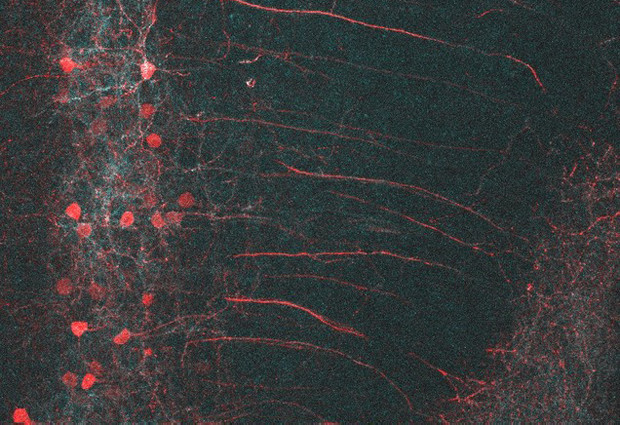
Senses: Fathoming fear
EMBL’s Cornelius Gross wants to understand fear responses and the brain circuitry that governs them

BY EDWARD DADSWELL AND MARGAUX PHARES
“When you’re in a state of fear, there’s this internal feeling, this sense of dread, this sense of threat, this sense of impending harm or doom,” says Cornelius Gross, a group leader at EMBL’s Monterotondo site. “That’s the conscious state, but many things happen in your brain before you get to that point.”
Exactly what happens before that point is what Gross and his team are trying to find out. They’re interested in studying parts of the brain involved in states of fear and anxiety. Most of our conscious processing happens in the cortex – the layer of cells on the brain’s surface, which is involved in some of our most complex activities. It helps us with things like social interaction, language, and memory. Fear states arise deeper in the brain, in regions like the amygdala, hypothalamus, and brainstem. These parts of the brain arose much earlier in our evolutionary history than the cortex, and are concerned primarily with instinctive behaviours and basic survival.
You can think of fear as a sixth sense
“Our current view is that information comes via your senses and goes to the hypothalamus, which is the most ancient part of your brain – the part you share with animals like worms and flies. We think the hypothalamus produces a state that can motivate you to take action – we’re trying to figure out how that works,” says Gross. “Then signals are passed to the brainstem, which contains motor neurons that run down to your spinal cord. The motor neurons make your muscles move to carry out your behavioural responses.”

A brake on behaviour
Gross uses a range of techniques to investigate these processes in mice. One is calcium imaging, in which fluorescent molecules are used to reveal which neurons are firing in a living mouse while it’s awake and engaged in various behaviours. Pharmacogenetics or optogenetics – in which a mouse’s neurons can be controlled using either chemicals or light – are then used to block or activate specific neurons and determine how they control behaviour.
Recently Gross and his team have investigated defensive responses to social threats by observing the behaviour of a mouse when a more aggressive cagemate is introduced. “We’ve been able to block a specific region of the hypothalamus and demonstrate that the animals then don’t show avoidance or defensive behaviour,” says Gross. “We’ve also shown that the cortex can inhibit the activity of these regions. Normally, that puts a brake on our behavioural responses, but in a stressful environment the brake can be gradually removed, allowing us to react more strongly when we perceive a threat. It’s an important way in which the brain regulates our behaviour according to experience.”
Subconscious sensing
In all these processes, there’s an intriguing mix of conscious and unconscious pathways. “When humans feel fear, this probably occurs when signals percolate up to the conscious realm from the hypothalamus, which is not directly conscious,” explains Gross. “This is supported by findings from famous studies where people have suffered damage to their visual cortex and say they can’t see anything, but when they’ve been shown snakes and other types of archetypal fear stimuli, there’s been activation in the amygdala and other structures associated with fear – although they’re not aware of it. You could almost think of that as a sixth sense. There’s this conscious way that we experience the world, but the primary impulses are entirely unconscious. Both come from the same sensory organs, but drive our behaviour via different pathways.”


